There are many approaches to how an aerospace engineering consultancy mitigates risk in your aerospace project. In this blog, we will look into how a consultancy approaches risk assessment and the technologies they use to advance their client’s projects.
Understanding Risk In Aerospace Projects
Risk management in many ways is the determining factor for the success of any aerospace project. Identifying risks from internal and external factors is vital for safety and economic viability. There is an opportunity to mitigate any threats and capitalise on opportunities, all of which will impact the final project outcome.
For aerospace projects, the scope and complexity of projects mean there are plenty of opportunities and risks to be identified. Unmanaged risks can have life-threatening consequences and cause considerable financial loss.
Risks Associated With Aerospace Projects:
- Project Management- Between planning, execution, estimating and communication, a lack of sufficiency will impact project timelines, data accuracy and feasibility.
- Engineering Risks- Some manufacturing processes involve higher risks than others. Outsourcing parts can also lead to disruptions to project timelines due to delays.
- Regulations & Standards- Due to the ever-evolving nature of the aerospace industry, regulations & standards are under constant consideration. If changes are made during a project timeline, it can delay progression, as the model must be reworked to fit the new guidelines.
- Geopolitical & Economic Volatility- Energy and raw materials may be put under sanctions by governments, impacting their trade and availability.
- Supply Chain Management- The complexity of the supply chain mirrors that of the project itself. Issues with supply chain management can lead to quality issues and project delays.
- Competitive Field- The aerospace industry has a highly competitive domestic and international market, making it challenging for smaller businesses to establish themselves.
Expertise In An Aerospace Engineering Consultancy
Finding the right aerospace engineering consultancy for your needs is determined by their expertise. Your compatibility will be based on the opportunities and insight they can provide, based on the guidance you require.
For example, at Airframe Designs, our consultancy capabilities include analysis, design, certification, additive manufacturing, and 3D scanning. You can find out more about our aircraft engineering capabilities here.
Conducting Risk Assessment For Your Aerospace Project
As we know, there are plenty of risks that could impact your aerospace project. There is also an extensive list of risk assessments that can be implemented by an aerospace consultancy to mitigate threats.
1. Preliminary Hazard Analysis
During early design phases, preliminary hazard analysis will identify possible hazards, the impact they could have on the project, and the likelihood that they will cause an impact. This allows designers to implement risk mitigation measures early in the process.
Preliminary hazard analysis is an example of proactive risk management. The financial impact of identifying risks earlier on in a project timeline is considerably less than further along the line.
2. Failure Modes And Effects Analysis
A singular aerospace project is made up of thousands of individual components. In failure modes and effect analysis, each component is examined. Potential failure modes are then identified. The impact of a singular component failure is weighed against the whole system to determine its severity.
This helps prioritise risks of component failure, based on their overall impact, creating a clear risk management plan.
3. Fault Tree Analysis
There are lots of external and environmental factors that can impact your aerospace project. Fault tree analysis is where a possible, undesired event is reviewed as a potential outcome. Aerospace engineering consultants will then work backwards from that event to identify all potential causes.
The results ultimately present the likelihood of an unwanted event occurring, based on the number of contributing faults. Not only does this approach identify individual component faults, but how they combine to cause system failure.
4. Fatigue Analysis
Fatigue in terms of the aerospace industry determines how an application performs under routine pressure. This is critical for aerospace projects, which are cyclically exposed to extreme conditions.
By using either a stress-based or strain-based approach, fatigue analysis provides intel on the lifespan of a project as a whole or individual parts. Through analysis, engineers can identify adequate fatigue life for load-carrying components.
Technologies Used By Aerospace Engineering Consultancy To Mitigate Risk
CAD systems are essential for risk mitigation for aerospace projects. They offer a host of benefits, including optimised efficiency and accuracy, and expanded innovation abilities.
- Enhanced Precision- CAD systems allow designers to achieve better accuracy, lessening the risk of miscalculation.
- Improved Simulation- Through 3D modelling, engineers can conduct risk analysis in a contained, cost-effective way.
- Cost Controlled- A risk in any aerospace project is cost. It is unethical to cut corners in risk management. However, using CAD systems offers a cost-effective solution that doesn’t lead to material waste or extensive labour bills.
- Historical Data Retention- A final aerospace project has undergone countless adjustments and changes. CAD systems can record historical changes and provide enhanced documentation capabilities.
Additive manufacturing creates complex parts with high precision. Manufacturers can then ‘print’ intricate designs, which provide accurate results for testing and risk analysis. Additive manufacturing allows manufacturers to overcome complex design challenges in the aerospace industry. Its benefits include:
- Reduced lead times,
- Improved reliability of every part produced,
- Minimising waste and energy consumption,
- Reduced life-cycle cost.
You can find out more about additive manufacturing in the aerospace industry here.
Aerospace Engineering Consultancy With Airframe Designs
Extensive knowledge and access to advanced technology is how an aerospace engineering consultancy mitigates risk in your aerospace project.
At Airframe Designs, we offer detail-oriented and attentive constancy services to divisions in the aerospace industry, including aircraft, space, and military projects. You can access our case studies for more insight into our successful partnerships.
If you’d like to know more about how consultancy from Airframe Designs will mitigate risk in your aerospace project, then don’t hesitate to contact us.



